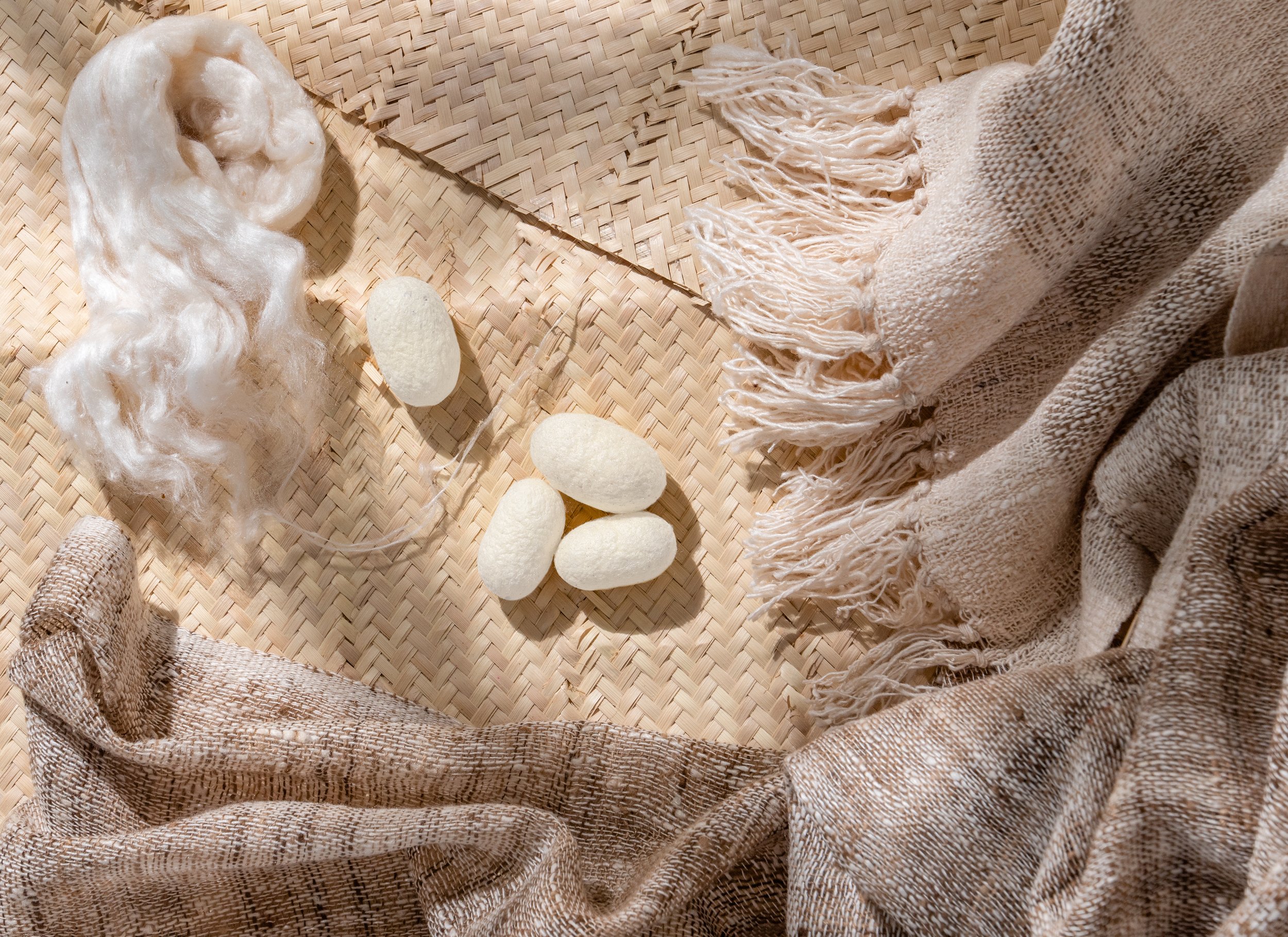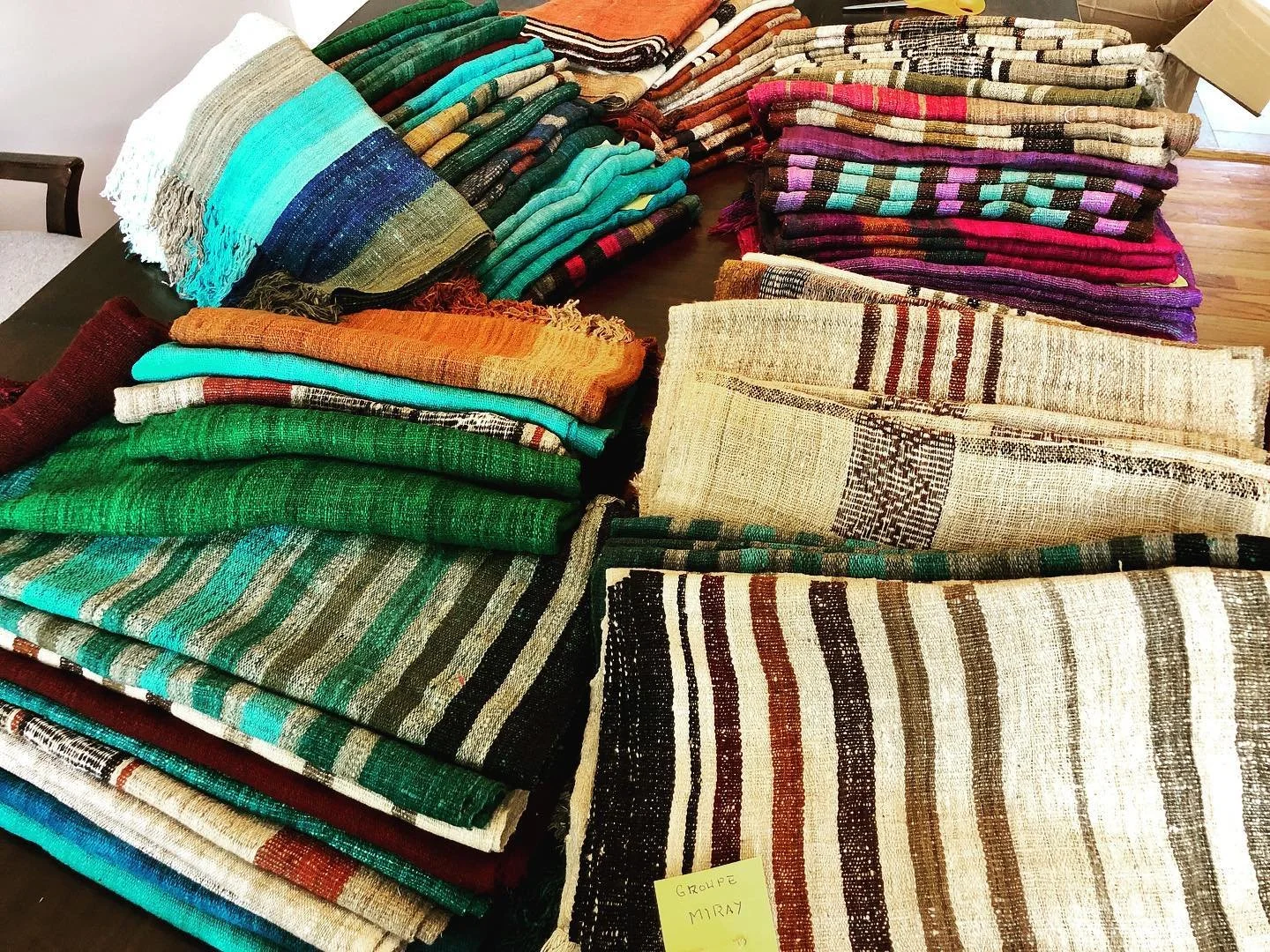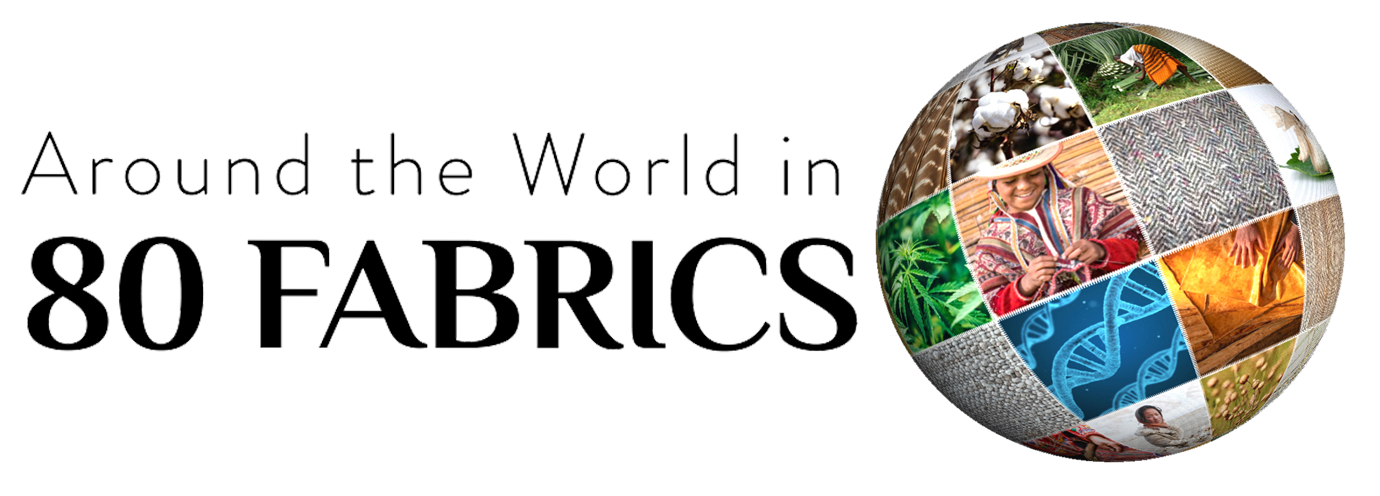
FABRIC: WILD SILK
Region: Central Highlands, Madagascar
Fabric Name:
Wild Silk
Origin:
Borocera Silk Moth
*The co-op also uses Mulberry silk in their designs
Who made our fabric:
Lovasoa Cooperative weavers, Central Highlands, Madagascar
Design by Peace Goods, USA
Natural history and ecology:
Deforestation, in particular burning the hillsides, continues to be a serious issue for the weavers. Although the Tapia trees are fairly fire resistant, the fires kill the silkworms as well as some of the trees.
What makes this so special: Borocera silkworms are only found in Madagascar. They can only live wild in the forest and cannot be cultivated like traditional Mulberry silk. Madagascar's tapia trees are the habitat and food for the Borocera silkworm.
A wild silk, spun, dyed, and woven in the Central Highlands of Madagascar….
Maria and Patricia flip the cocoons inside out, stacking 5 to 10 cocoons on top of each other to make a silk cocoon "ball". These cocoon balls are boiled in soapy water to remove the silkworm's natural adhesive that binds the fibers together, then spun.
Peace Goods works with 100 women weavers in the all female Lovasoa Cooperative. Members have full decision-making power over their cooperative and their work.

“There is a long history of wild silk in Madagascar. It is called Lamba Landy meaning “Silk Cloth” or Lamba Mena meaning “Red Cloth”. The cloth doesn’t have to be red, however. Red is a color of power in Madagascar. Calling the silk Lamba Mena represents how the silk is a cultural symbol of power.”
— Kyley Schmidt/ Peace Goods
Kyley Schmidt
Meet, Kyley Schmidt, a textile designer and social entrepreneur living in North Carolina. She founded a women’s silk weaving cooperative in the central highlands of Madagascar while serving as a Peace Corps volunteer. All the silk scarves and shawls you see on their site are designed by her in N.C. and are hand-crafted by the Lovasoa Cooperative weavers in the Central Highlands of Madagascar. There are currently about 100 weavers in the cooperative.
The weavers do everything by hand- from spinning the wild silk yarn on a drop spindle to dyeing the yarn with mostly natural dyes (made from leaves, bark, and clay), and hand-weaving on simple floor looms. These techniques are centuries old and have been passed down from mother to daughter for generations.


